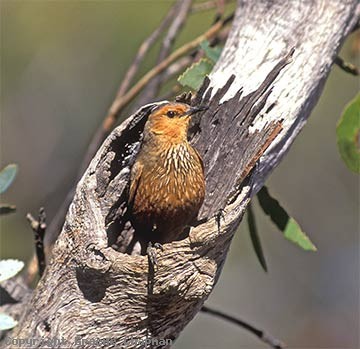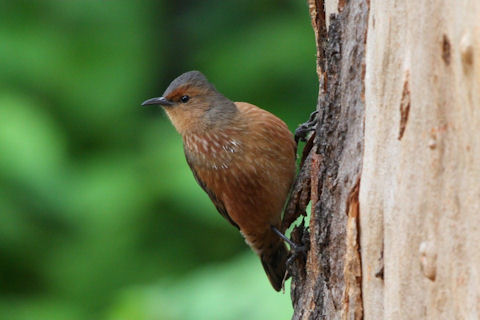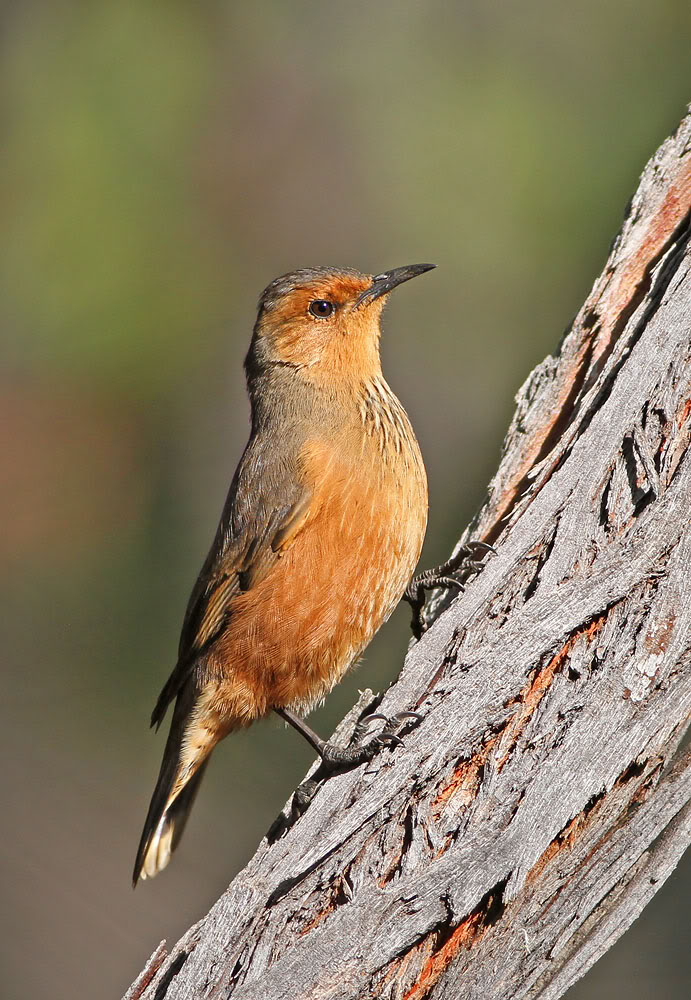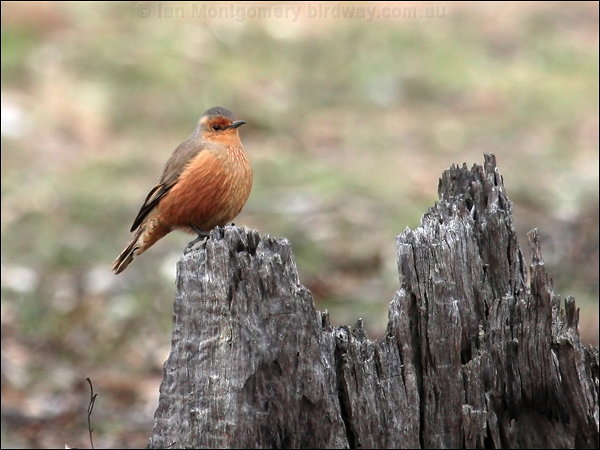
Climacteris rufa
TAXONOMY
Climacteris rufa Gould, 1841, Swan River, Western Australia.
OTHER COMMON NAMES
English: Allied rufous treecreeper, wheelbarrow; French:
Йchelet roux; German: Rostbauch-Baumrutscher; Spanish:
Sube Palo Rufo.
PHYSICAL CHARACTERISTICS
6.7 in (17 cm); 1.1–1.2 oz (30–33 g). Rufous brow and cheek
with black eye strip; underparts rufous streaked with white;
gray-brown upperparts with rufous-brown tail.
DISTRIBUTION
Southwestern Australia, Eyre Peninsula of South Australia,
with loose links between these populations.
HABITAT
Eucalypt woodland and forest; mallee.
BEHAVIOR
Lives in family groups, consisting of a breeding pair and offspring
from previous breeding seasons. Sedentary. Peeping
calls, churring calls at predators.
FEEDING ECOLOGY AND DIET
Forages on trunks and lower branches of eucalypts and casuarinas,
and also commonly on the ground, especially among fallen
timber. Eats insects, especially ants, as well as centipedes and
snails, small reptiles, and seeds.
REPRODUCTIVE BIOLOGY
Breeds August–January in hollows in branches, stumps, and
fallen logs. Female incubates one to three eggs for 17 days.
Young are fed by parents and helpers, and fledge at 26 days,
with high success (78% in one Western Australia study).
CONSERVATION STATUS
Not threatened. Secure, but populations have declined or gone
locally extinct in parts of the heavily cleared Wheatbelt of
western Australia.
SIGNIFICANCE TO HUMANS
None known.
Photo Gallery of - Rufous treecreeper




 Animalia Life
Animalia Life